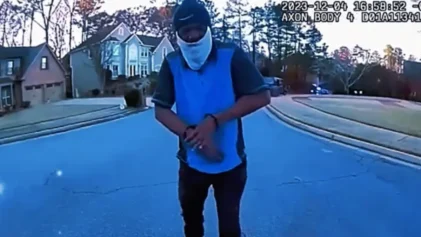New research has revealed a set of reasons why so few Black students have been labeled as “gifted” in the American school system. The answer, though simple, is outrageous to some: Many schools across the country are just not testing, noting nationally more than a third of Black students matriculate in schools without systems set up to identify gifted students.

According to a new report published by Urban Education, students of African descent are often overlooked as candidates for the test or attend schools that have decided not to identify anyone, regardless of race, at all — thus limiting their access to the exams.
The research team was led by Marcia Gentry, a professor of education studies and the director of the Gifted Education Resource Institute at Purdue University. She called the findings “stark” and “frightening.”
“I’m frustrated with the whole sense that [gifted education] will fix itself if we just find the right [screening] test,” she said in an interview with Education Week. “It’s bigger than that, and it’s been consistent for decades.”
The greatest issue the group found was inconsistency in testing across the varying school systems.
The study showed 277,000 Black students were identified in 2016, as academically gifted nationally. The same study labeled 771,000 learners as “missing,” based on a formula accounting for “both the students who had no access to gifted identification and those who attended schools where students of their race were underidentified.”
As a part of the methodology to conduct the study, educators used federal civil rights data for all U.S. public schools in 2000, 2011-12, 2013-14 and 2015-16 in an effort to track the numbers and percentages of students in different racial groups identified for gifted and talented education. The information was calibrated to consider what type of location where the students studied (i.e.: rural, town, suburban and city schools).
The study also factored in economic and social class, weighing in different wealth measurements each of the students’ households represented.
One of the most shocking findings found in the research is that over 40 percent of the schools, regardless of location and more than half in multiple states, never tested a single student for the academically gifted or advanced distinction or IEP. This disregard for the gifted identification is not a new phenomenon but has been happening for multiple years, the report notes.
Then there is an issue of access. States like Massachusetts, Rhode Island, Vermont and the nation’s capital, Washington, D.C., had fewer than 5 percent of students with access statewide to the testing, the study revealed.
In schools that have provided reasonable access to gifted identification, the study determined the higher the concentration of Black students or students in poverty, the lower the actual percentage of overall students identified for gifted education.
Schools receiving schoolwide Title I funding, and financial assistance to schools with high numbers or high percentages of children from low-income households oftentimes make them eligible to receive free or reduced-price lunches, on average identifying about 8 percent of their students as gifted. Non-Title I schools trump that number, marking 13 percent of the school body population as gifted.
Gentry noted, “We didn’t have a lot of bright spots, which was a little depressing.”
The Purdue scholars found in every state regardless of the locale distinction of the school district (rural, suburban, urban, etc.), Black students had been “underidentified” for gifted programs on average by 50 percent.
The educators argue for the teaching serving to be “equitable,” a state has to create an enrollment-to-identification ratio of at least 0.8, a determinant mirroring the federal Equal Employment Opportunity Commission’s formula used to identify racial disparities in the workplace.
An example of an “equitable” gifted identification would be testing for children with an 80-percentage average of above. Very few states in the country have the recommended ratio. Those six states are Arkansas, Maryland, Michigan, New York, Utah and Wyoming.
Education Week pulled out four recommendations Gentry and her team have for schools and district leaders from the study:
1) Review local data to identify any long-running racial and economic disparities and set measurable goals for inclusion.
2) Identify students for gifted education through both multiple measures, such as assessments and portfolios, and multiple pathways, including teacher, student, and parent nominations and summer programs.
3) Focus gifted identification on individual strengths to be paired with services — such as math, writing, art, or leadership —rather than first identifying ‘general giftedness’ as an entry to any services.
4) When using a gifted assessment, consider local rather than national norms when setting cutoff scores.
Gentry said, “You know, where there’s a magnet school of the gifted, they’ll oftentimes put it in a mostly brown or Black school, but you walk down the hall, and the gifted program will be mostly white faces.”
She continued, “People talk a lot about, well, if we get brown and Black kids in [gifted education], it’ll be good for the brown and Black kids, but it goes further than that. It’s actually good for the program because it brings diversity of views and discussion and of culture. So not only does it enrich the kids [of color] we put in there, but it makes the program better for all the kids who are there.”
In 2021, a study published by Christopher Redding and conducted by Jason A. Grissom suggested Black students, despite not having a lot of access to the identification, actually benefited less from participating in gifted education programs than their white peers. The benefit is gaining access to programs that can open other doors.
These findings don’t say gifted programs are not capable of supporting “high-ability students from historically marginalized student populations,” but that educators and administrators should examine the programming and curriculum given to those students and assess if they serve the cultural needs of a diverse student population.
Though discovered in a lesser capacity, Native American and Hispanic students also experience dips in tracking gifted identification also. In addition, those populations and students from low-income households struggle in finding relevant programming, allowing them to achieve the same benefits as their white peers.


